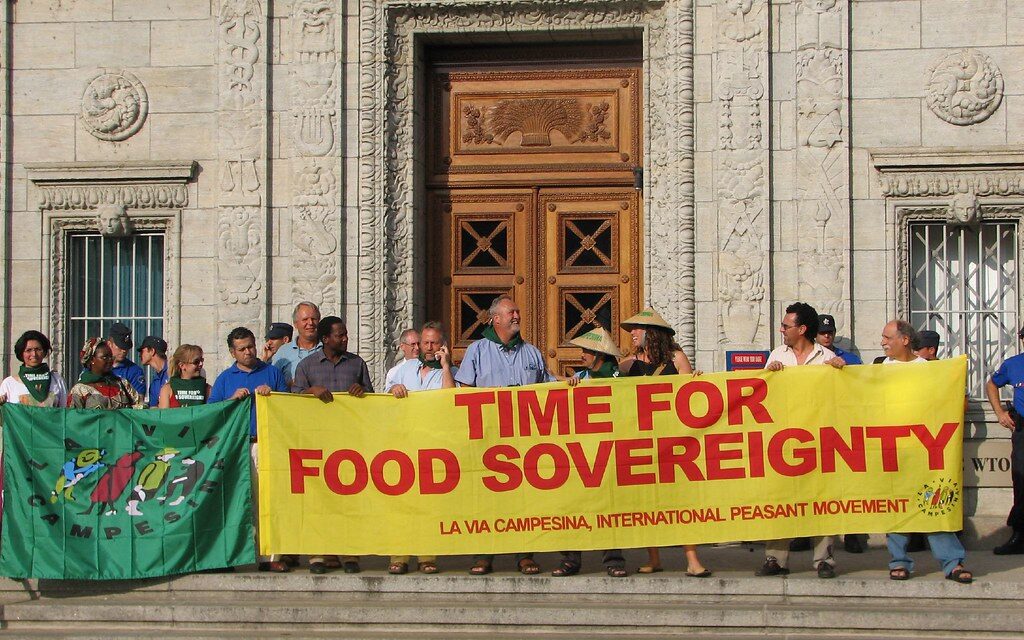Image from Creative Commons
In a country of abundance, letting your citizens go hungry is nothing short of a human rights abuse. There are 6,500 food deserts– geographic areas with little to no access to affordable and nutritious foods, in the United States. Black and Indigenous communities are most likely to live in food deserts; meanwhile the “American System” prospers. It is a gross misuse of power that our nation’s leaders let 34 million American citizens experience food insecurity. Nearly 40% of all food is wasted in the U.S. Consumers account for 43% of all food waste in America, amounting to 130 billion meals worth of food. With this much food waste, malnutrition is a violent act of disenfranchisement. Fighting hunger with food sovereignty is a tool that paves the way for a healthier, greener future.
Food sovereignty is the right of communities to determine the quality and quantity of their food by controlling production and distribution. Many initiatives include food banks, community gardens and “farm-to-table” programs. But, it is not enough to just implement food sovereign programs. Sovereignty must be a movement powered by Indigenous practices. Native Americans have a long history of food sovereignty adapting their programs to align with indigenous foods. This alliance with the land guarantees sustainable food sovereign programs. Still to this day, Native households use food sovereignty to address hunger, restore stripped traditions and empower their economy. Applying this mindset to our daily lives equips us with tangible ways to engage our neighborhoods.
Working toward food sovereignty means ending our reliance on a market-driven food supply. Remember when grocery store shelves were picked clean at the start of the lockdown? I once waited an hour while store employees prepared my curbside pickup order. I was privileged to live in a grocery-dense town with a stable internet connection. However, 34 million Americans do not have that same access. This lack of equity creates food apartheid.
Food apartheid refers to the socioeconomic conditions that lead to food insecurity. This is where the government should step in to protect its people, but time and time again, their priorities are misplaced.
Frankly, our nation’s government is poor at supporting the food insecure. The United States rarely prioritizes food security. The Federal Reserve (Fed) doled out 300 billion dollars in bank bailouts in early March alone, according to the US budget. The U.S. military recieves 1.7 trillion dollars in taxpayer money every year. Yet in 2021, the country only spent 182 billion on food security programs – about 10% of our defense budget.
Another way to understand food apartheid is to look at grocery store density, the ratio of grocery stores to residents in a city. The national average grocery store density is one per 8,500 people. Communities of color in the U.S. are less likely to have this high of a density. In some parts of the country, like New Orleans, Louisiana, the ratio is one per 14,000. Low-income individuals in food deserts are not responsible for inadequate access to nutrient-dense food.
University students are one of many groups that face food insecurity. Nearly 40% of students in the U.S. struggle with access to healthy, affordable food. Stigmatizing food insecurity discourages those in need from taking advantage of the resources on NC State’s campus. Feed The Pack pantry opens its doors to faculty and students struggling with food security. The pantry contains a vast selection of free food and meal prep kits. To access this resource, the pantry requires a valid campus ID card. Currently located in the Quad Commons, the pantry will move to North Hall on April 11, 2023. Hours of operation and contact information can be found on the Feed the Pack website.
Please care for yourself and your community and hold elected officials accountable for not doing more to protect the food insecure.





